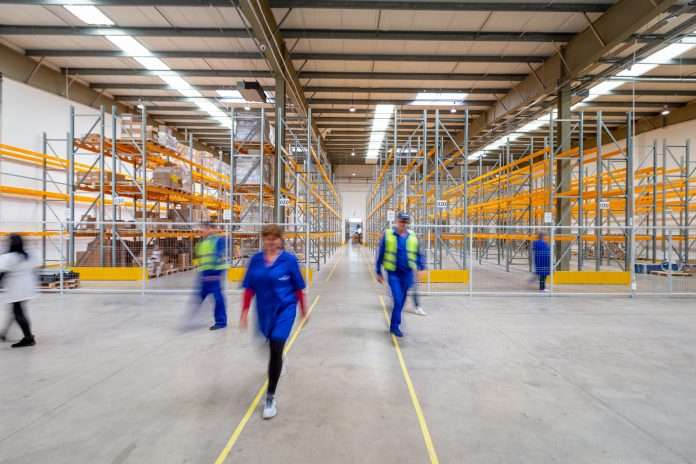The challenges surrounding periodic full inventory counts, whether conducted annually, semi-annually, or quarterly, present a significant obstacle for warehouses and distribution centres. These exercises often disrupt operations, prompting many companies to seek alternative methods like cyclical counting. However, this approach can prove labour-intensive and financially burdensome, preventing its widespread adoption within businesses. Scanbot SDK delves into the future of the space.
Traditional warehouse practices have heavily relied on manual barcode scanning, where human workers navigate through shelves and pallets. Despite its effectiveness, this method remains error-prone and time-consuming, leaving room for costly discrepancies stemming from human errors.
However, a promising solution has emerged in the form of drone barcode scanners, armed with cutting-edge computer vision technology. These unmanned aerial vehicles are increasingly being considered as a viable means to automate and expedite inventory management tasks.
Known as warehouse drones, they are equipped with high-resolution cameras, and navigate through warehouses efficiently. These aerial robotics platforms are gaining traction as powerful tools in smart warehouses, specifically tailored for inventory management.
Their primary function involves swift and precise barcode scanning of items, shelves, or entire storage areas, with the collected data seamlessly integrated into the inventory system.
Advancements in drone technology have led to autonomous or swarm-intelligence-enabled drones. These innovative capabilities allow drones to operate independently, navigating aisles without manual intervention, thereby elevating warehouse automation to new levels.
Drone barcode scanners function by following pre-set routes within the warehouse while scanning barcodes along their path. Upon detecting a barcode, they capture an image using their camera and transmit the information directly to the central inventory system. This real-time data flow enables timely decision-making, empowering businesses to proactively manage their inventory requirements.
The application of drone barcode scanners spans various critical areas within warehouse operations. From conducting accurate inventory audits to monitoring stock levels in real time, these drones significantly enhance efficiency, accuracy, and data collection processes.
Deploying drone barcode scanners offers multifaceted benefits to warehouses. They not only expedite barcode scanning processes compared to human operators but also ensure the accuracy of inventory records, mitigating costly discrepancies.
However, their implementation does pose certain challenges. Regular maintenance, personnel training, regulatory compliance, and integration complexities are factors that warrant careful consideration for successful adoption.
Despite these difficulties, drone barcode scanners signify a significant evolution in warehouse operations. Their potential to deliver speed, precision, and safety holds promise in reshaping warehouse management paradigms. As such, warehouse operators seeking innovation and operational excellence should view optimised barcode scanners as a strategic investment for future success.
The adoption of drone barcode scanners marks a pivotal chapter in the ongoing story of warehouse innovation, poised to revolutionise the industry’s approach to inventory management.
Read the latest blog from Scanbot SDK here.
Keep up with all the latest FinTech news here
Copyright © 2023 FinTech Global



